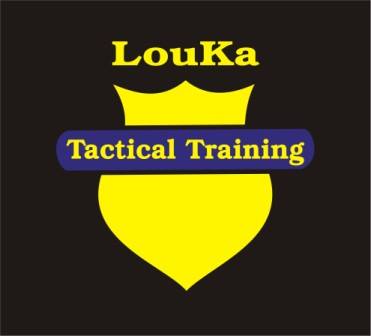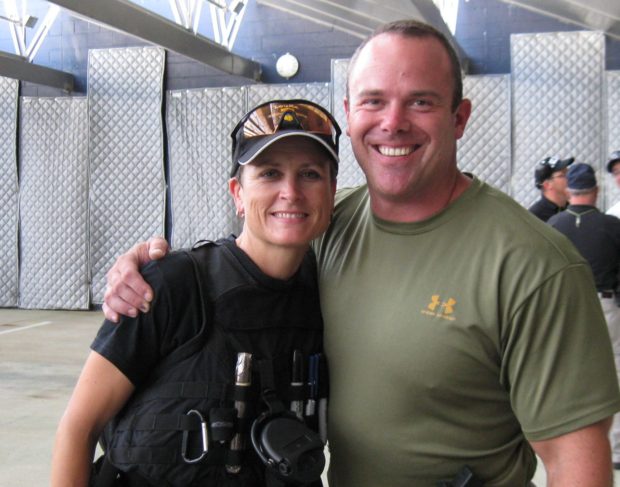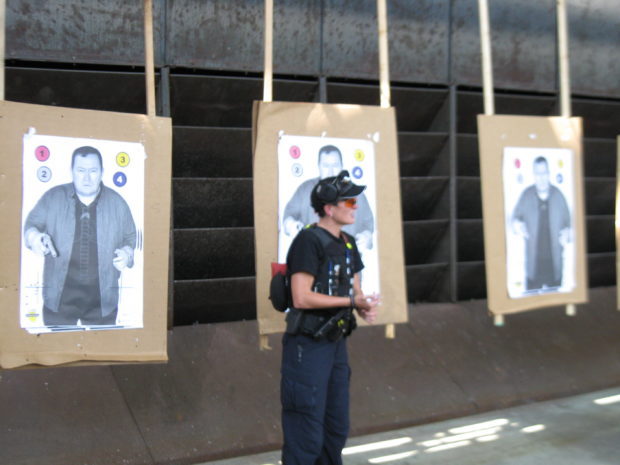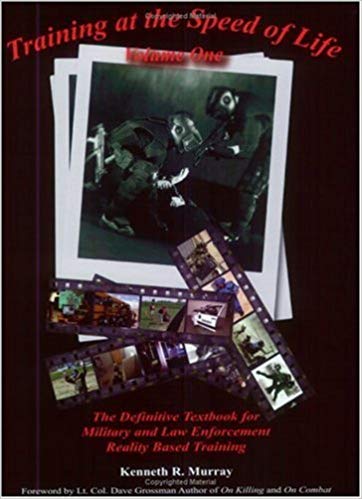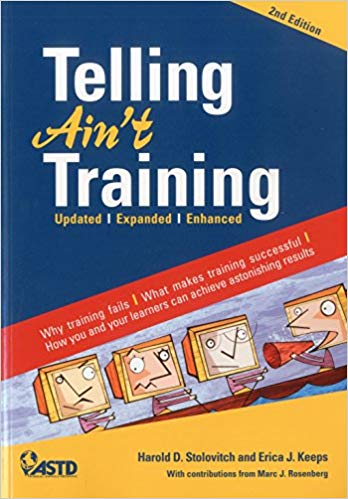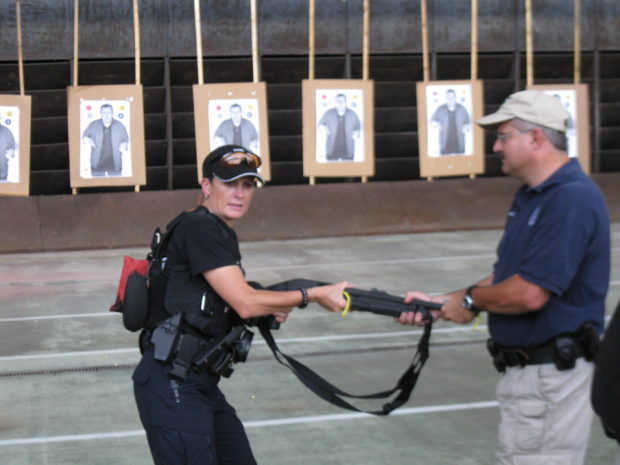Written by: Greg Ellifritz
I’m starting a new series with this post. There are more competent firearms instructors teaching quality classes than ever before in human history. None of us has a corner on the market. Just like I’ve trained with dozens of top instructors over the years, my students will also train with other teachers. That’s a good thing.
In my view, steering our students towards other high quality instructors is one of our jobs in this industry. We know our students will train with other instructors. It’s up to us to point them in the right direction and steer them towards the good instructors and away from the industry trash.
I am doing a series of articles interviewing trainers from whom I’ve personally taken classes. These trainers may not be the people who you see everyday in your Facebook and Instagram feeds. They may not be the “cool” folks to train with, But they teach quality classes and I can personally vouch for their knowledge and skills. These are the folks with whom you should be spending your training dollars.
I’m going to start out the series interviewing LouAnn Hamblin.
I met LouAnn at a training conference put on by the now-defunct American Society of Law Enforcement Trainers about 20 years ago. It was a massive conference with about 800 police instructors in attendance. There was a shooting competition for all the attendees. I am not the world’s best handgun shooter. But when competing against other cops, I normally fare pretty well. I entered the competition. I fired the match stage and then watched as other instructors shot after me. My score was the best of everyone who had shot the match.
The instructor following me was LouAnn. She smoked my score. I was honestly surprised. I normally win these competitions or at least place very highly. How did I get beat by a girl? I had to meet LouAnn and understand how she kicked my ass.
Little did I know, but she was an instructor for the former H&K shooting school. She was extremely proficient. We began talking. I liked her spunky attitude and her amazing competence with a gun in her hand.
At the next major police instructor conference I attended, I took a very hard-core class on handgun retention in a ground fight. When it came time to try the instructor’s techniques, LouAnn approached me and asked me to be her partner. She told me: “You are the biggest guy in the class. If I can make the techniques work on you, I can make them work on anyone.” I admired her tenacity. Even though I outweighed her by 120 pounds, she proved to be a formidable opponent. I grew to like LouAnn even more.
She came down to TDI a couple times for classes I was teaching. I also attended one of her commercial classes as well as countless of her classes at various conferences over the years. I’ve grown to respect her as both a friend and an instructor and chose her to be the first instructor I interview for this new series of articles.
Greg: Tell me about your tactical and training background.
From the beginning:
I retired from police work after having served 22 years. After my academy graduation I was immediately recruited by my police academy to come back and teach firearms which I did for seven years. During that time, I was encouraged to join the NRA and International Association of Law Enforcement Firearms Instructors (IALEFI). Interestingly I’m currently in my 4th term as a board member and teach the master firearms instructor development for IALEFI. I am also an NRA Patron Life Member and a USCCA member.
As an officer I mainly worked patrol but was also a member of our Tactical Support Unit (TSU) AKA SWAT support with built in responsibilities of handling higher threat situations. This title has now developed into the “Tactical Patrol Officer” for many agencies nationwide. I also did a DEA stint as a task force agent, I spent three years working in Detroit undercover working street level narcotics serving 104 high risk search warrants as well as being involved in other high risk incidents. I took advantage of some great training and operational opportunities while there. I was a member of our agency’s training division for many years. In addition to teaching at two police academies in the area of motor skills, I taught combatives, ground control, defensive tactics, simulations, pursuit and defensive driving, firearms and tactics, field training, fitness and wellness and police cycling. I do not remember a time in my career where I wasn’t training.
Career changing events:
In 1997 I attended an IALEFI training conference which changed my life. I attended a class taught by Heckler and Koch for their International Training Division (ITD) some of the finest men and Tier 1 tactical instructors of their time. When H/K was sold the ITD was disbanded. Fortunately, John Meyer rose from the ashes and founded Team One Network where, over 20 years later, I am still proudly affiliated with a great mentor. In 1999 I founded LouKa Tactical Training and have trained internationally to include contract work in the middle east and close protection detail firearms training for police and large corporations. I have instructed at all the major law enforcement training conferences over the last 20 years to include: IPMBA, IALEFI, ILEETA, IAWP, MTOA and NTOA SWAT conferences and as of today I have trained over 4,000 women in law enforcement in pistol alone including the Kuwaiti Female Special Forces Executive Protection Team.
I have written articles and have been interviewed for Police Marksmen magazine, Calibre Press, Law Enforcement Instructor Magazine, ILEETA, and was quoted in Ken Murray’s “Training at the Speed of Life” training manual.
Instructional Design Originals:
In 2005 I was contracted to design a firearms and tactics class for the City of Fort Worth. I was just finishing my master’s degree in education from the University of Michigan (Instructional System Design and Human Performance Technology) and used this work as my capstone project. My instructional system design included a front-end training needs analysis, many subject matter experts as well as training with the Federal Air Marshals to create the content. We delivered that class across the United States and versions of that class for ten years. That class evolved into our “Tac. Pistol: Responding to the Active Killer” course which is formatted for the armed citizen as well as armed professionals.
Our company has grown, and we now have 12 solid, professional instructors with diverse backgrounds and training disciplines. In 2011 we brought our customized designed approach to multi-disciplinary “Building Warrior Women” training events. Every event is front loaded with leadership training. We then move into the “hard skills” which include combatives, firearms, combat casualty care, and fitness.
Greg: You are at the forefront of research in the difference between training men and training women. What three things can male instructors do to better reach their female students?
1-Empathy as a skill set. Try being a gender minority somewhere and pay attention to the subtle, and not so subtle nuances socially. Women can make men just as uncomfortable as men can make women. Men who have grown up in a household with a lot of sisters know exactly what I mean. A longtime girlfriend of mine married a pretty powerful dude. Pat is smart, charismatic with a very strong personality. He is a business owner and a CEO for an international company. Pat and Nancy raised two Warrior Women. These women are of age now and give Pat a run for his money. They are smart, beautiful and competitive. To watch them hold their father accountable and for him to concede is a lot of fun to watch.
2-Read on the topic of communication styles and gender differences from the academia and university level athletics. Dr. John Gray’s work “Men are From Mars Women are From Venus” is still relevant book. There are others. My father used to say, “I told ya once, so I done told ya.” In other words, he spoke, so therefore he expected me to learn. “Telling Ain’t Training” by Erica Keeps and Harold D. Stolovitch was a required read back in 2001-2005 during my graduate work. This book resonated with me because I’m a strong visual learner. I learned to teach in order to be understand and not to hear myself talk or assume that everyone learns the same way. Many instructors talk too much. They want a performer to know that they know a lot. Not my style, besides there’s so much more to learning than what an instructor has to say. Do women need details? Yes, they do. But only when they are ready to receive them.
3-Take a class taught by an experienced and well trained female instructor. Yes, they do exist. If you can teach your wife how to golf or drive a “stick” then you might have a chance of teaching her how to shoot. If not, save your marriage and send her to a class taught by a competent female instructor.
These three recommendations will hopefully raise your reader’s level of understanding of what is required for a female to receive the information. Women do not care how much you know until they know how much you care. Understanding the affective domain of learning is key and as an instructor begins to age the other two domains will be affected. Skill level will eventually deteriorate. One’s ability to “keep up with training and equipment trends” becomes harder so the knowledge gap increases. Just sayin.’
Greg: What class do you most like to teach and why?
I love delivering Building Warrior Women training events for two reasons. Usually they are larger groups which multiple instructors. This not only gives me the opportunity to display our instructor talent, which runs deep, the instructors team teach and develop each other which is the epitome of Building Warrior Women. We model the behaviors of respect and mutual admiration. I really love promoting my instructors like a proud parent. Kathy Vonk, co-owner of LouKa Tactical and I are only two people. As much as we like to take participants to the next level of their performance, our instructors are responsible for taking LouKa Tactical to the next level as well. I am grateful that they share their gifts with us. We have a great culture.
Second, these events are workshops and self-exploration and the host typically has a say in the content as we use surveys to determine wants and needs at every level within an organization. These training events are smart and fun with an evaluation that supports an agencies’ goals. We never miss with our instructional goals meeting the participant’s goals. Everybody wins.
Greg: You’ve taught active killer response classes for cops for many years. Now you are teaching the same classes for armed citizens. What does the average armed citizen need to think about when responding to an active killer incident?
Situational awareness and mobility. One of the best ways of winning any fight is to avoid getting hit regardless of the weapon. My partner was a first responder to 1 October-Mandalay Bay shooting. Our phones exploded as they normally do however, my family members added additional insight for me. My sister phoned and said, “that’s it, I need a gun.” I responded with “what you really need is situational awareness and increased mobility.” I took my mother to Sunday service for many years. Because she was with a walker the concept of run, hide, fight is a moot point when you have zero mobility. So, where we sat was always key and what to do in the event of a situation was an understanding that we had. More families should have an understanding of where and what so there are fewer liabilities in a given situation and more opportunities for force multiplication.
Raising a tactically savvy family is your reader’s responsibility. We could all learn a little bit from the world of EP when it comes to SA. Walking with children…where do you walk? How would we want our Principal to respond to certain situations, how have we communicated that to our Principal? Consider training your loved ones to create this thing called a force multiplier.
Some of these folks at the Route 91 Concert were injured because they simply could not move. They couldn’t get over the fence. They were caged and involved in close quarter battle with 22k other concert goers who were all trying to do the same thing. Having said all that, armed citizens are not necessarily first responders and since I am retired neither am I.
I consider myself a second responder and I will step in if necessary, however, my safety and my loved ones come first. My days of being unselfish are over. Will I step in? Absolutely. If ALL circumstances are right for me. Have I thought about what those circumstances might be for the last 25 years? Of course. The question is, am I prepared with the right equipment or will I be a liability? I am plagued with analysis as it relates to these types of things.
The everyday armed citizen needs to train realistically for this type of thing. I know bringing all their cool “kit” and kill shit to the range is sexy but unrealistic. Everyday carry means just that; run what you brung. This might mean a seven round magazine. (but bring a bunch of them to training)
When I was still on the job we were issued a Glock 26 as an off duty weapon. We trained and qualified with both. The policy and mindset said everything BUT getting into an incident off duty. “Be a good witness” was then, and is now, very popular among agencies and law enforcement officers. In June of 2014 a husband and a wife assassinated two Las Vegas Metro officers at a CiCi’s Pizza then ran to the Walmart down the street. The male shot a round into the ceiling and shouted, “We’re going to start a revolution.” Concealed pistol carrier, Joseph Wilcox (31 yrs. old), drew his handgun and challenged the male. Unfortunately, he failed to see the female half at which time she flanked him shooting him in the torso and killing him. Something that needs to be addressed in training once the fundamentals are understood. Firearms and tactics should be trained simultaneously. This is a whole new segment….
Greg: You have long been a police trainer and are now teaching more armed citizens. What’s the biggest difference you’ve seen between police and armed citizen training and what are your recommendations?
1-Training Needs Assessments:
So many folks want to be an “operator” however, having trained with many Tier 1 folks (and having family members who carry the title) I have a word of caution. Those folks are the military’s professional athlete. If you just want to say, “I took this guy’s rifle class” and you have unlimited resources spend your money. However, what do you really need?
There is a disconnect with what I need now as a civilian compared to what I needed as a police officer.
Additionally, I am no longer restricted by departmental policy. I am no longer worried about getting assaulted based on what I wear to work so the type of potential threat has changed my daily mindset. I do not necessarily have back up on their way and I no longer get paid to correct other people’s behavior, my interaction with the public is different. Cops get paid to control situations, armed citizens do not. Cops get paid to engage threats, citizens should consider options of disengagement tactical options first.
Cops are forced to filter through their use of force cycle and policy. Armed citizens are not bound to policy and junk defensive tactics training that is essentially forced down many officer’s throats. This is typically referred to as liability-based rather than survivability-based training.
There is much more team training in law enforcement than the private citizen. I would again recommend training to include others in your environment not just line drills. When they are ready to advance themselves that is.
As I age, I have changing self-protection considerations. My situational awareness is different. I am always carrying in a concealed fashion but that doesn’t mean I don’t train in weapon retention and basic tactics relative to my environment and resources. Civilian folk should consider more weapon retention as a part of enhancing their personal arsenal.
I am currently conducting training needs assessments for groups of women in order to appropriately design Warrior Women 1-4 pistol classes for the armed citizen. The everyday carry women have been burning up my email for the last three years. I have presented at a Girl and A Gun conference and have seen some pretty impressive numbers and performers. I think the women of the U.S. are ready for LouKa Tactical. We have combatives and tactics built into every class.
2- Motivational levels:
I have spent tens of thousands of my own dollars, some of which I will never get back, on big name organizations and the little guy with a small shop. If I’m asking for a pistol class for Christmas, I want to be there. If I’m traveling out of state, I want to be there. If I’m paying with my own time and dime, I want to be there.
Training law enforcement unfortunately can sometimes be not as rewarding as we would like for a variety of reasons. Most police officers do not have the same relationship with their firearms as armed citizens. Some even have an abusive and dysfunctional relationship with their firearm. Much of this has to do with choice. Compared to the armed citizen most often cops do not have the luxury of choosing their own equipment. This leads into a whole host of challenges. Motivational levels suffer as a result. The armed citizens of whom I have trained and trained alongside WANT to be there. They are eager to learn; they are knowledgeable about their equipment and are genuinely inquisitive. We like to say that we put “fun in functional training.” Armed citizens are quicker to buy into this methodology of training or instructional style than cops.
3-Veting your instructor!!!!!:
Over the last decade I have trained responsible citizens in some facet. Tactics…not to be confused with “tactical training” but just getting the everyday folk to understand do’s and don’ts and the why. Most experienced street cops know the why, so the breakdown must be there for those who have never been there or done that. I have seen different methodologies, motives, fashion and reality along with some of the biggest amount of horse-shit known to mankind in the “civilian market” which is one of the reasons I have avoided it.
There is a large bit of fashion, sexy crap out there that I refused to be affiliated with. I can give countless examples of instructor B.S. and stories that I have endured over the years from an “instructor” who took a class from a guy, who took a class from a guy, who took a class from a guy who might have actually done something at some point in his military, close protection or law enforcement career. Sifting through these folks is fatiguing.
On the other hand, the current or former military or law enforcement instructor who fails to make the adjustment or bridge the gap between law enforcement/military and private citizen’s needs also wastes a lot of people’s time and money. Some are just in the business for the money. They will come and they will go. Look for those who have stood the test of time and make sure they fit your current and future training needs.
4-Coming to class prepared and with humility:
Make sure you are ready for the class in terms of equipment and physical capabilities. All too often folks show up and are not prepared for either. If it is a mixed class with law enforcement and armed citizens, it can get ugly for the armed citizen if they are ill prepared, late or try to be someone they are not. If someone decides to bring only one gun and it goes down good luck getting someone to help a brother out. Likewise, in law enforcement classes. We get spoiled with having an agency armorer. In the world outside of the comforts of an agency, you’re on your own. When you have an equipment failure your best friends become Brownell’s and Amazon.
Everyone knows you’re a cop when you attend a class. They are all watching you to see how you compare, your skills, your equipment, your knowledge base. That can get ugly for the cop who never trains. There is an expectation that you at least have sound fundamentals, range and social etiquette and that you possess more of a professional demeanor on and off the range.
Greg- Thank you LouAnn for your extremely informative responses! You provided lots of life-saving information for my readers.
I would encourage you to book a class with LouAnn. You can find her course offerings at LouKa Tactical Training or on the LouKa Tactical Facebook page.
